This classic snickerdoodle recipe is soft and chewy, coated in cinnamon-sugar, and ready to devour in just 30 minutes.
It’s soft in the middle with a perfect crunch around the edges. And that fragrant, lightly spiced coating is hard to beat.
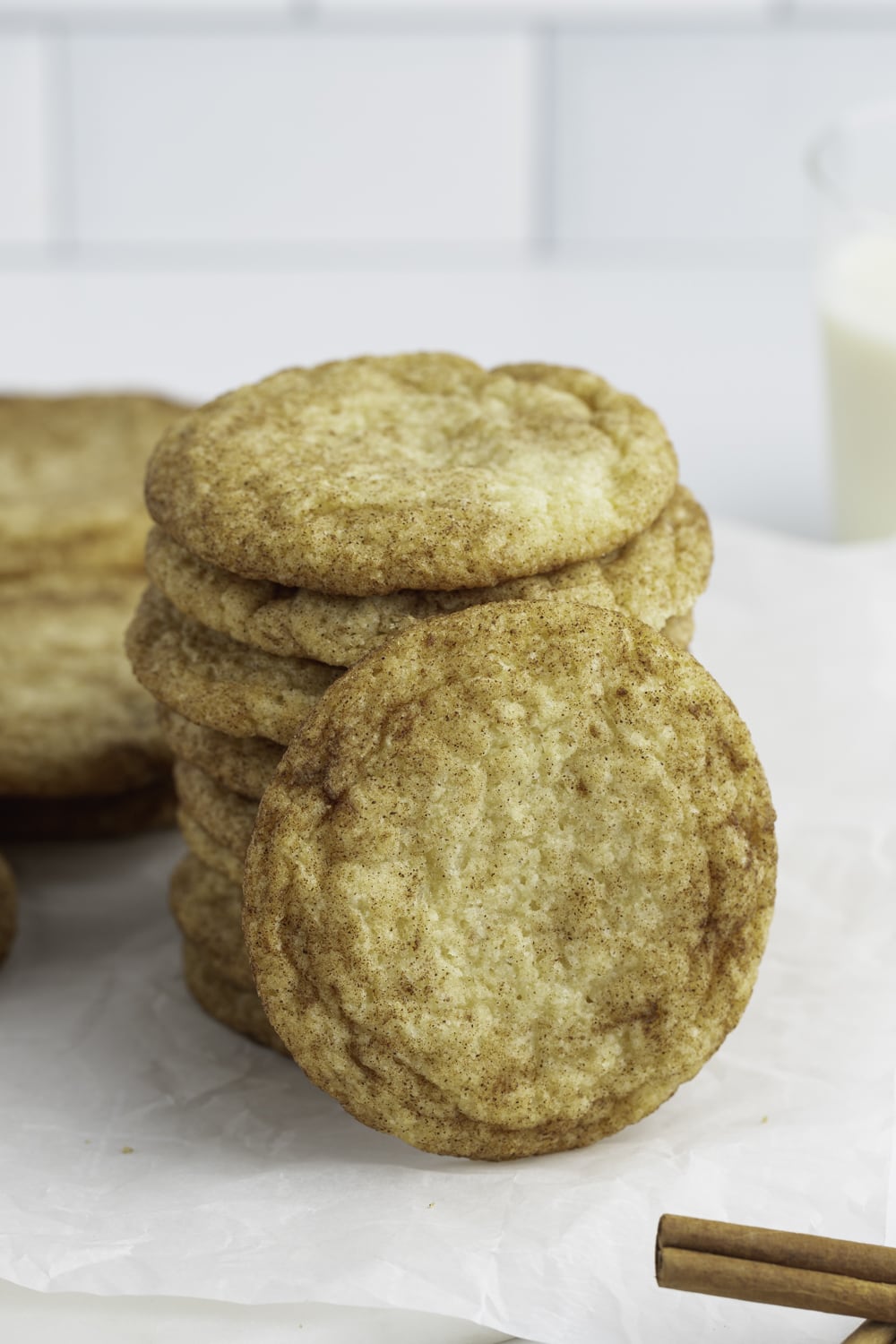
These cinnamon sugar cookies are incredible. It’s as simple as that.
Snickerdoodles are perfect for holidays, get-togethers, potlucks, or, in my opinion – ANY day of the week.
They’re super soft, not too sweet, and smell incredible.
The only thing missing is a big glass of milk. So let’s get baking!
What Are Snickerdoodles?
Simply put, snickerdoodles are a type of sugar cookie — only they’re so much better than most.
Unlike most sugar cookies, snickerdoodles contain cream of tartar. That one ingredient completely transforms them.
It makes them delightfully chewy, subtly tangy, and downright delicious.
Furthermore, you’ll roll snickerdoodle dough balls in a cinnamon sugar mixture before baking them. That makes them extra sweet and warmly spiced.
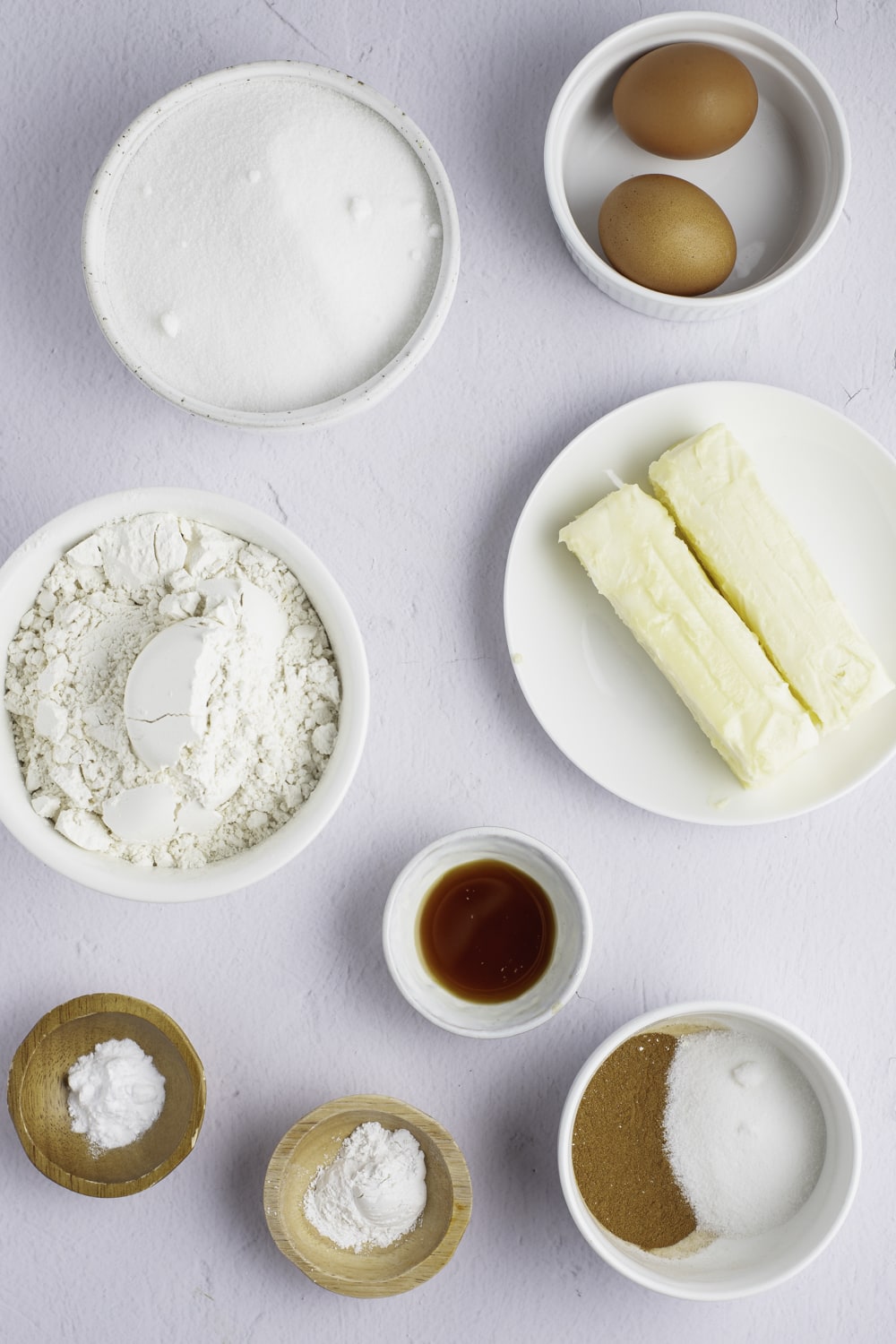
Ingredients
These pantry ingredients are all you need to make drool-worthy snickerdoodles that are soft on the inside and crispy on the outside:
- Softened Butter and Sugar. These two ingredients cream together until smooth and fluffy.
- Eggs, Flour, Shortening, Baking Soda, Salt, and Vanilla. These ingredients, when combined with the creamed butter and sugar, make up the cookie dough.
- Cinnamon and Sugar. It’s the classic mixture that coats and defines the timeless flavor of the snickerdoodle.
- Cream of Tarar. You can’t make snickerdoodles without it!
Why Is Cream of Tartar in Snickerdoodles?
I’ve already said that snickerdoodles aren’t snickerdoodles without cream of tartar.
But what makes it such a special ingredient?
Cream of tartar is a white powder formed during wine production. Specifically, it is the residue left in wine barrels after grape fermentation takes place.
Since it’s a byproduct of wine, it has natural acidic properties. And here’s how this magical ingredient affects the cookie:
- It makes the cookies rise. When used together with baking soda, the acidic property of cream of tartar activates the baking soda. In turn, it does a better job at making cookies rise.
- It makes the cookies rise – part 2. Also, when the cream of tartar combines with liquid ingredients, it produces carbon-dioxide air bubbles, which in turn disintegrates the gluten in the flour. This process lifts the cookie dough.
- It provides chewiness. The air bubbles created when mixed with the liquids become even larger in the oven, making the cookie chewy and airier.
- It makes them soft. Cream of tartar also hinders sugar from crystallizing. This is what makes snickerdoodles super soft, not crunchy, on the inside.
- It provides a unique flavor. Cream of tartar neutralizes the bitterness of baking soda, forming a subtle sour undercoating in the cookie.
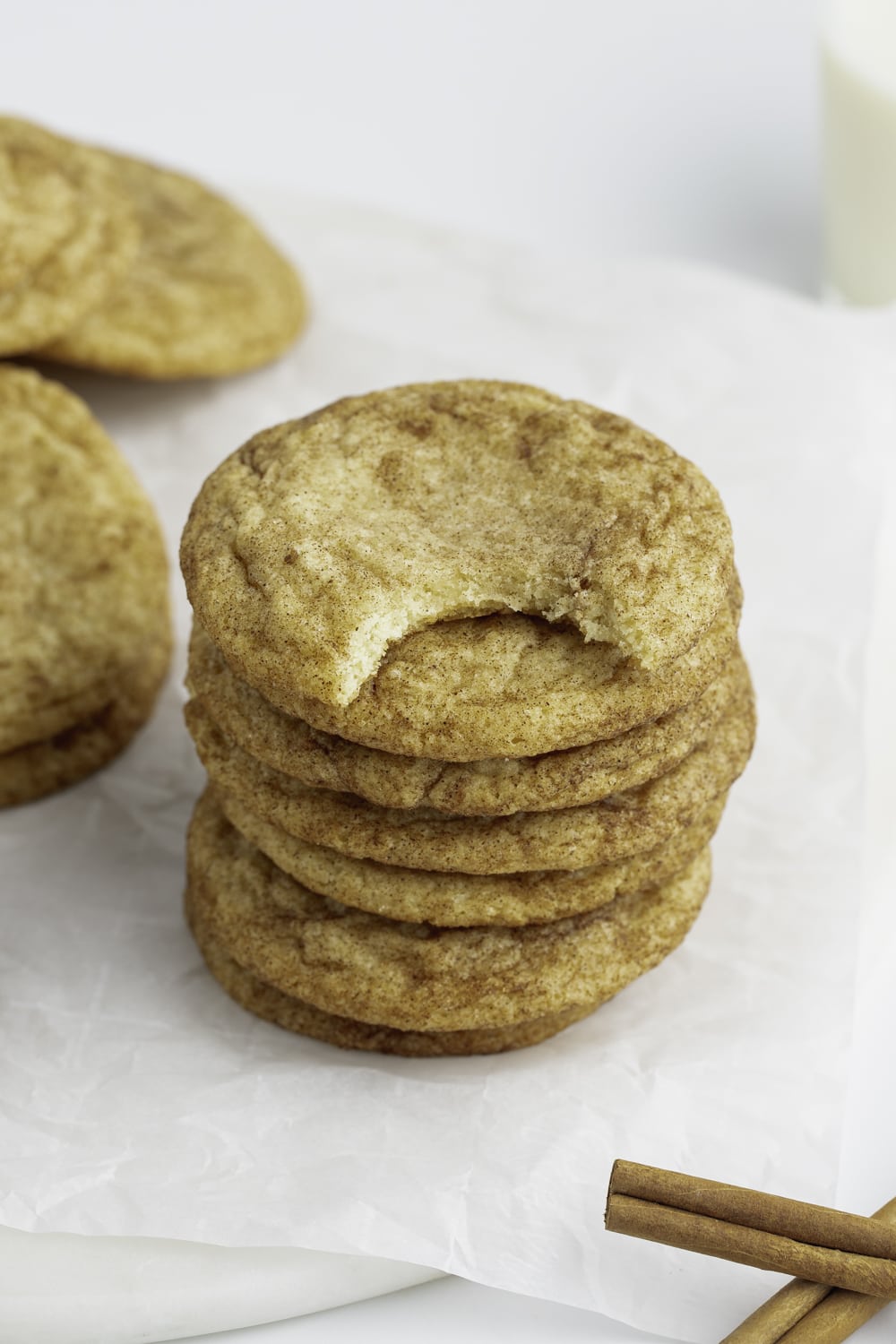
How to Make Snickerdoodle Cookies
These snickerdoodle cookies are so delectable I’m often surprised how easy they are to make. Here are the simple steps.
1. Make the batter. Combine the sugar butter, sugar, eggs, vanilla, and shortening. Then, add the salt, flour, cream of tartar, and baking soda. Mix until it becomes batter-like.
2. Shape and coat the dough. Use a spoon or cookie scoop to shape the portions. Then roll them in cinnamon sugar.
3. Bake for 8-10 minutes. Place the balls on and ungreased baking sheet with two inches of space in between them. Bake for 8 minutes for softer cookies and 10 minutes for crispier cookies.
4. Cool and enjoy. Let the cookies cool for a few minutes on the tray, then transfer them to a wire rack to cool.
And that’s it. Pretty easy huh?
Tips & Tricks
Remember these tips and tricks while baking and your cinnamon coated sugar cookie will be flawless:
- Add nutmeg. Add half a teaspoon of ground nutmeg to the dough before baking. It adds a unique flavor that makes your snickerdoodles taste even better.
- Use room temperature eggs. The butter should also be room temperature.
- Chill the cookie dough. It needs just 30 minutes before you bake it and the cookies will be nice and thick.
- Pick the right sugar. Use brown sugar instead white to give your snickerdoodles additional moisture and a rich flavor.
- Cream of tartar substitute? Replace it with 2 teaspoons of white vinegar OR lemon juice. Works like a charm!
- Use fresh ingredients. Make sure your baking soda and cream of tartar are both fresh. To see if they’re still good, put a tiny bit in some water. It should start fizzing immediately. If not, it’s time to buy more.
- Monitor the dough while baking. When you start to see the edges turning light gold, the cookies are done.
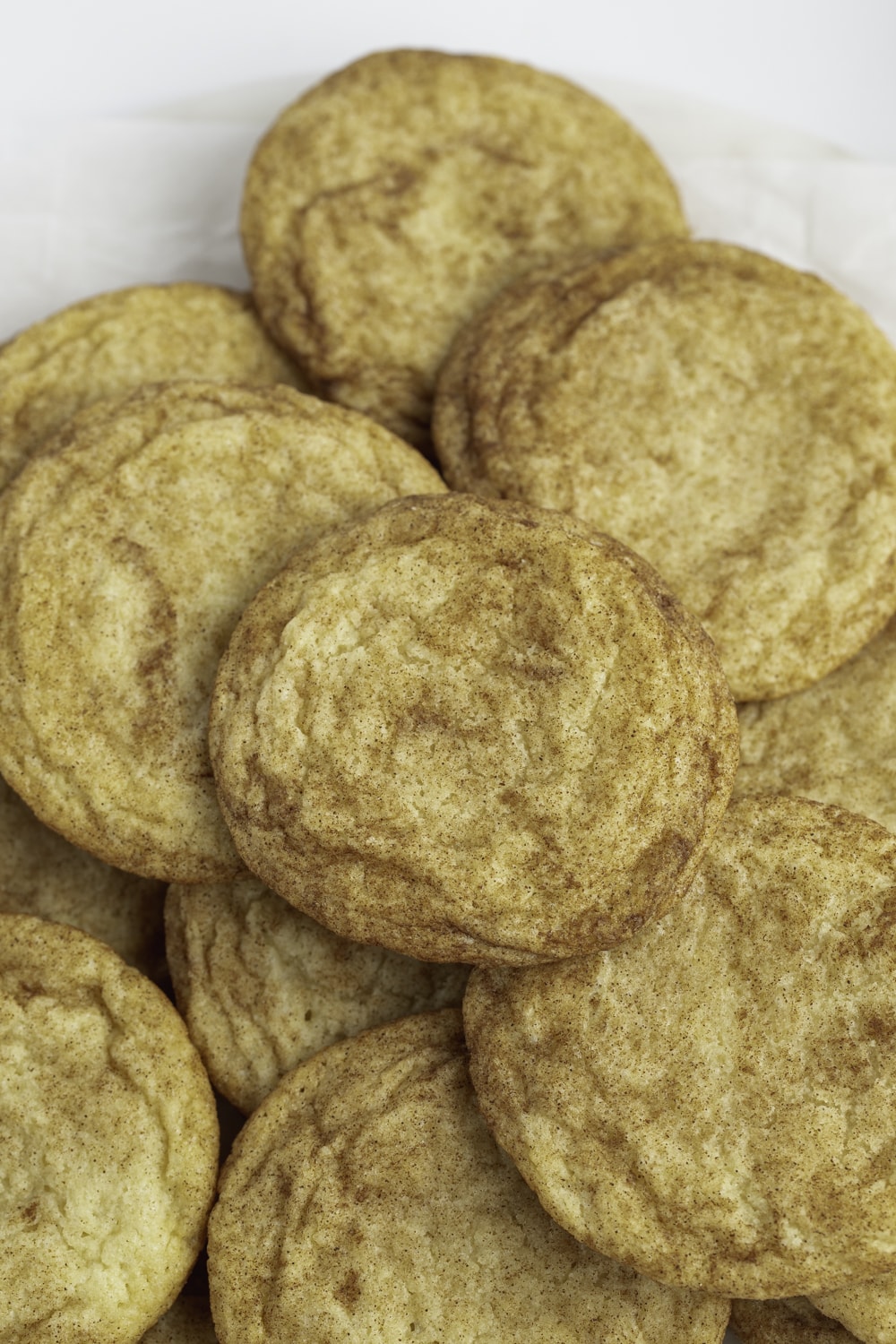
How To Avoid Tough Cookies
Here are a few additional tips for avoiding tough cookies:
- Don’t overbake the cookies. They should be just barely golden and look a bit raw in the middle. That’s how they stay so soft.
- Keep an eye on the temp. Every oven is different. So, if you find the cookies burn quickly, buy an oven thermometer to check.
- Don’t over-mix. Use a hand mixer for the butter and sugar, but then use a spatula to mix the dough by hand.
Storing Snickerdoodles
I can eat a whole batch of soft snickerdoodle cookies in one sitting. But most people have more willpower.
In that case, here’s how to store them:
To store: Place cold cookies in an airtight container with parchment between the layers. Store at room temperature for up to 7 days.
To freeze raw cookie dough: Place the cookie dough balls onto a baking sheet with parchment paper. Then, freeze for 30 minutes. When they’re solid, transfer them to a freezer bag for up to 3 months.
To freeze baked cookies: When they’re cold, line a baking sheet with parchment and a single layer of cookies. Freeze until solid, then transfer them to an airtight container or freezer-safe bag.
To thaw: Bake frozen cookie dough from frozen. Simply add a couple of minutes to the oven time. For baked cookies, just let them sit on the counter for 20-30 minutes.
More Cookie Recipes You’ll Love
Amaretti Cookies
Ginger Cookies
Rice Krispie Cookies
Butter Toffee Cookies




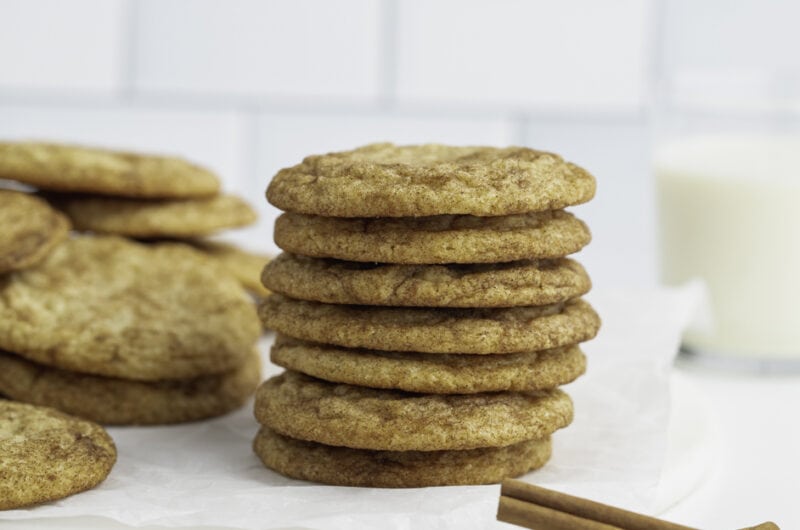
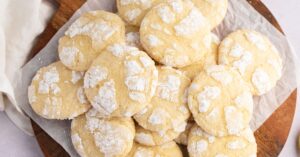
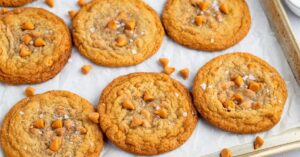
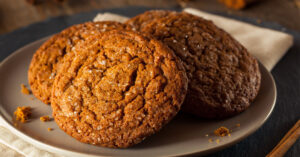
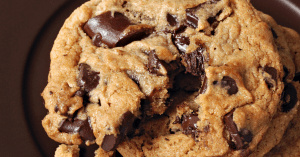
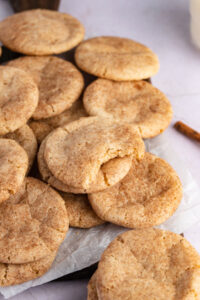


If you want crispy snickerdoodles, use 1/2 cup butter and 1/2 cup crisco.